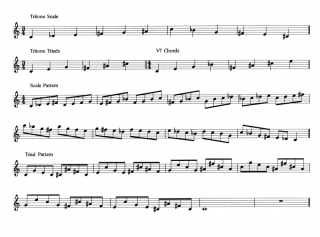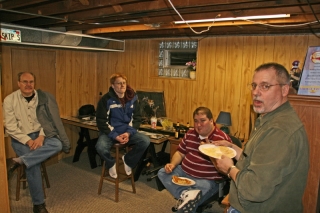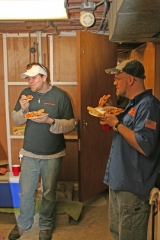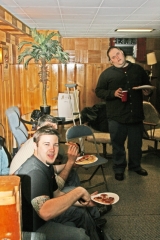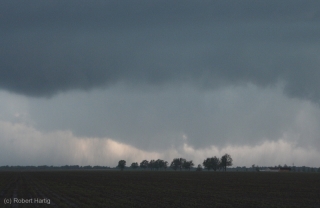With sunshine and cold temperatures forecast through Monday and beyond here in West Michigan, I’d say we’re in the process of becoming nicely ridged. The GFS and NAM agree on a little trough digging into the southern plains on Saturday, with a surface low just southeast of the trough axis fetching moisture up into Dixie Alley. Shear is ample, as you’d expect this time of year, so maybe the South will see some organized storms. But up here in the north, none of that matters. Chilly and uneventful are the words for us this next week or so.
So it’s nice to know that chasers got in a little early play Tuesday in Iowa. The Storm Prediction Center shows 18 tornado reports, including the photogenic Creston tornado: a beautiful, sunlit tube that a number of chasers captured on camera and video. That had to have been a sight to see, and I congratulate those of you who witnessed it.
The big surprise came a day later, though, yesterday in Greensburg. No, not Greensburg, Kansas; Greensburg, Pennsylvania, 25 miles southeast of Pittsburgh. Who would have expected a tornado out there in March in hill country? True, the SPC had issued a moderate risk for the east, but that was considerably farther south, and the affected area was teetering on the very edge of a light risk. The bulk shear certainly was capable of producing supercells, but I figured they’d just be hailers. I had written off the setup as a straight-line wind event.
Yet a supercell drifting across the jumbled terrain of southwest Pennsylvania exhibited a pronounced mesocyclone that culminated in the Greensburg tornado–this in an environment where temperature and moisture that seemed inadequate to begin with dropped rapidly over the course of just a few miles. Lapse rates had to have been steep in order to sustain the storm in those conditions.
As near as I can judge, the Pennsylvania supercell appeared to drift along some kind of warm frontal boundary, with just enough moisture and heat to sustain it and enough helicity to produce a tornado. VAD wind profiles at KPBZ were straight from the west at all levels; farther east-northeast, however, at KCXX, backing surface winds veered rapidly with height, providing decent low-level torque.
But that was, I believe, in colder air. It strikes me as a pretty delicate balance that sustained the Pennsylvania supercell. Greensburg is located in the Allegheny Plateau in the foothills of the Appalachian Mountains, so perhaps the terrain may have influenced local boundary-layer winds enough to produce the Greensburg tornado. I can only speculate. The Plateau overall is mountainous, but when I look at photos of Greensburg, the town appears to be situated in a fairly level area. What the case is five miles southwest in Hempfield Township, where tornado damage was reported along Route 136, may be a different matter. I don’t know the area. However, the highway map shows curvy roads consistent with a rugged landscape.
It’s fun to think about when there’s no other weather to contemplate, which right now there isn’t. But it’s on the way. It’s spring, the sun is higher, the Gulf is setting up shop, and Storm Season 2011 is moving in.
ADDENDUM: Having looked at a few videos of the tornado in Hempfield since I made this post, I’m inclined to think that terrain wasn’t a factor. Looks like the right ingredients just came together on the mesoscale level. Interesting storm!
